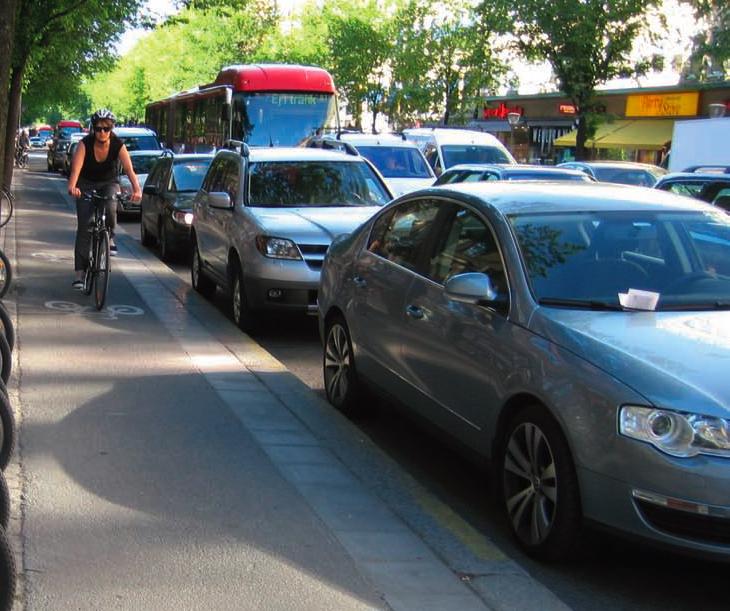For most people, parking probably isn’t the first thing to come to mind when reading about sustainability and transportation. When was the last time you read about parking policies, compared to articles about biking or high-speed rail? But cars are still a major part of our transportation network and progressive parking policies have surprisingly good benefits when it comes to reducing carbon dioxide emissions and promoting more sustainable transportation.
 In the European Union, changing parking policies are part of larger goals, such as complying with EU air quality standards or reducing greenhouse emissions. For example, in France, revised parking policies reduced emissions by 14%. It would make sense to look more closely at parking: every car trip begins and ends with one, and the less time cars spend looking for a parking spot, it means less emissions into the atmosphere. But history has taught cities that the solution to this problem is not to build more parking spots. Then, where does the solution lie?
In the European Union, changing parking policies are part of larger goals, such as complying with EU air quality standards or reducing greenhouse emissions. For example, in France, revised parking policies reduced emissions by 14%. It would make sense to look more closely at parking: every car trip begins and ends with one, and the less time cars spend looking for a parking spot, it means less emissions into the atmosphere. But history has taught cities that the solution to this problem is not to build more parking spots. Then, where does the solution lie?
Progressive policies enacted in various European cities have demonstrated that re-visiting how we approach parking has an effect not only the air quality, but also how people use public transportation.
Some examples:
 Copenhagen, that favorite example city for cyclists, has in place policies and street design that encourage biking / public transit and discourages vehicle use. Parking fees are most expensive in the city center and the city re-designs parking spaces into pedestrian zones.
Copenhagen, that favorite example city for cyclists, has in place policies and street design that encourage biking / public transit and discourages vehicle use. Parking fees are most expensive in the city center and the city re-designs parking spaces into pedestrian zones.
The Netherlands organizes its parking into zones. Zone A has excellent access to public transit (but too dense to be accessible by car), Zone B has good access via both public transit and car, and Zone C mainly accessibly by car. The amount of parking spaces built in each zone varies inversely with access to public transit. For example, in Zone A, there is only one parking spot for every 2,690 square feet — which leaves a lot of space for other modes of transit, such as biking. In contrast, Zone B allows one parking spot for every 1,345 square feet.
In Zurich, there are laws in place to maintain a balance between space for vehicles and for public use (whether it’s for public transportation or a pedestrian-only space). For every off-street parking spot that is created, one on-street parking spot is removed.

Barcelona has Bicing, a bike-sharing program that was launched in 2006. It led to a two-fold increase in bike ridership (from 30,000 trips a day before 2006 to nearly 100,000 in 2009). It also has streets designed for pedestrian use.
Isn’t it amazing that something so easily taken for granted — like parking — can have such a significant impact? Revisiting transportation policies through different perspectives can help us move closer towards the bigger picture, like decreasing our dependence of fossil fuels and encouraging other modes of transportation.
This article only touches the iceberg on the impressive impact of parking policies. If you would like to know more, as well as read about the case studies of various major European cities, the Institute for Transportation & Development Policy (ITDP) has a full detailed report available here. (Information and statistics for this article were provided by the ITDP report.)
By Emily Han


